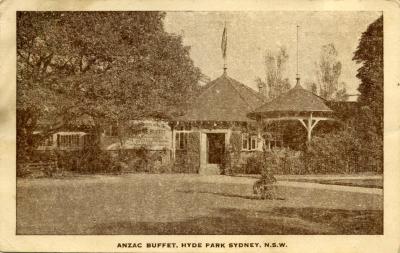Furlough House - 8 Division ex-POW Miss 1946 fundraising badge
1946Circular tin-backed, celluloid badge produced to raise funds for the 8th Division -ex-Prisoners of War Association and Furlough House.
It features a central greyscale portrait of the head and shoulders of Sister Jean Greer, wearing her dress uniform and hat, on a cream background. Around the perimeter of the badge are the words 'Furlough House - 8 Div Ex-POW Miss 1946 Jean Greer' in black lettering.
The reverse has a metal pin which encircles the edge of the badge before ending in a point which can be pushed through clothing for attachment.
This fundraising badge features Nursing Sister Jean (Jenny) Greer, representing the 8th Division ex-Prisoners of War Association. She was chosen as 'Miss 1946' - the face of the fundraising campaign.
On 12 February 1942, Sister Jean (Jenny) Greer of the 2/10th Australian General Hospital, had been evacuated from Singapore on SS Vyner Brooke, alongside 64 Australian nurses, as Japanese military forces made their way across Singapore, capturing the island.
Greer was wearing her grey tropical pattern ward dress when, on 14 February 1942, the Vyner Brooke was sunk by Japanese aircraft. She managed to swim to a piece of wreckage, which was big enough to accommodate several survivors. The survivors on the makeshift raft were caught in a current that moved them near the shores of Sumatra. They were then taken prisoner of war.
During her captivity, Greer kept her dress clean and neat, saving it for special occasions, such as birthdays, ANZAC Day, Christmas, funerals, and her liberation.
The Australian War Memorial have her dress in their collection. A similar ward dress belonging to Nursing Sister Iole Harper is one of the centrepieces of our collection. She was also wearing it when the Vyner Brooke was sunk and it bears marks from the oil on the water.
Of the original 65 nurses on the Vyner Brooke, only 24 made it home. Twelve were killed during the air attack or drowned following the sinking, twenty-one were murdered on Radji Beach, and thirty-two became prisoners of war, eight of whom died before the end of the war.
For over one hundred years Furlough House has existed to serve the community and pay a debt of gratitude to those who have served Australia in war.
Furlough House was a unique concept originally conceived to provide holidays for the families of WW1 soldiers. Over time it came to be regarded as a living memorial to those Australians who served and died in war.
It was the work and inspiration of Mrs. Blanch Cooper Day, which established and helped maintain the successful holiday house which later evolved into a retirement village. Mrs. Cooper Day was a pioneering feminist who understood the stresses that mothers experienced rearing children and her idea of a holiday at no cost, with medical support and full board was a revolutionary one. Volunteers gave their time and support to secure the success of Furlough House.
Details
Details
Around the egde of the badge:
"FURLOUGH HOUSE - 8 DIV EX-POW MISS 1946
JEAN GREER"
Other items from Recollections of War
- Australasian Trained Nurses' Association Badge presented to Evelyn Wilson
- New Zealand Registered Nurse badge presented to Georgina Dickson
- Postcard showing the ANZAC Buffet in Hyde Park, Sydney
- U.S.S. America printed cloth sailor doll
- WWI era double-sided pendant locket featuring an Australian soldier and young woman - 1
- H.M.A.S. Vengeance powder compact
- Hair work mourning Albert chain or fob - 1914
- St. John Ambulance Association Bradford Centre shield 1895-1954
- St. John Ambulance Brigade Geelong 'Ambulance Competitions' shield 1915
- Metal identity tag belonging to Frederick Charles Morris 1918
- Hallmarked silver identity tag belonging to Commander Archibald Thomas Stewart, Royal Navy
- Centenary of Melbourne souvenir metal matchbox 1934
Scan this QR code to open this page on your phone ->

